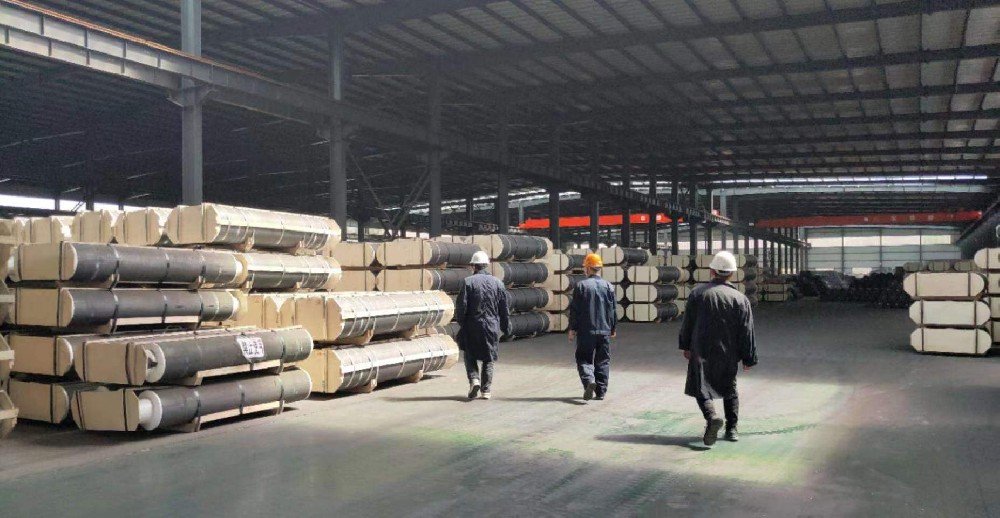

Graphite electrodes first appeared in the early 20th century for use in abrasive machining and were not applied in arc furnace smelting until the 1930s. In the late 1960s, foreign countries began using high-strength, high-density graphite electrodes, which significantly improved the smelting quality of arc furnaces. However, due to the monopoly of graphite electrode technology abroad, China has long relied on imported graphite electrodes, which severely restricts the development of domestic arc furnace smelting. To solve this problem, Chinese researchers started to engage in graphite electrode research and development.
By the early 1980s, China's graphite electrode production technology had initially formed, but the performance and life of graphite electrodes still could not meet the needs of the domestic metallurgical industry due to restrictions on raw materials, processes, and other factors. Therefore, China began large-scale research and development of graphite electrodes, and various types of graphite electrodes, such as high-power graphite electrodes and ultra-high-power graphite electrodes, were successively developed.
Graphite electrodes are important electrode materials commonly used in the production of metals such as aluminum and copper by electrolysis. They are made of high-purity graphite materials, have good conductivity, thermal stability, and chemical stability, and are essential key materials in the electrolysis process.
Graphite electrodes are mainly divided into two types: carbon electrodes and graphite electrodes. Among them, graphite electrodes are a high-temperature heat-treated carbon electrode. The manufacturing process of graphite electrodes includes mixing, forming, drying, high-temperature heat treatment, and other multiple steps. Each step in the manufacturing process has a significant impact on the quality and performance of the final product.
Graphite electrodes have many advantages, such as high strength, high conductivity, high temperature stability, and chemical stability, which make them widely used in industries such as casting, refractory materials, graphite chemistry, aluminum electrolysis, and steel smelting. At the same time, graphite electrodes are also an important environmental protection material. Due to their high purity and recyclability, their applications in the petrochemical, non-ferrous metals, and other industries are increasingly valued.
In summary, graphite electrodes are important materials with broad application prospects and market demand. With the continuous development of technology and the constant improvement of production processes, the performance and quality of graphite electrodes will be further enhanced.
Introduction to Graphene
Graphene is a two-dimensional material made up of a single layer of carbon atoms arranged in a hexagonal lattice. It is the basic building block for other carbon materials such as graphite, carbon nanotubes, and fullerenes. The discovery of graphene and its unique properties, including its high strength, thermal conductivity, and electronic conductivity, has led to significant research and development in the field of nanotechnology.
Properties of Graphene
High Strength: Graphene is the strongest material known to exist, with a tensile strength of 130 gigapascals (GPa), which is more than 100 times stronger than steel.
Thermal Conductivity: Graphene has an extremely high thermal conductivity, making it an excellent conductor of heat. Its thermal conductivity is 4,000 watts per meter per Kelvin (W/mK), which is higher than any other known material.
Electronic Conductivity: Graphene is an excellent conductor of electricity, with a very high electron mobility of about 200,000 square centimeters per volt-second (cm2/Vs). This makes it an ideal material for electronic devices.
Transparency: Graphene is transparent, allowing it to be used in a variety of applications such as touchscreens and solar cells.
Lightweight: Graphene is an extremely lightweight material, with a density of just 2.3 grams per cubic centimeter (g/cm3).
Applications of Graphene
Electronics: Graphene has the potential to revolutionize the electronics industry due to its unique properties, including its high electron mobility and conductivity. Graphene-based transistors and other electronic devices have the potential to be faster, smaller, and more energy-efficient than current technology.
Energy Storage: Graphene has the potential to improve energy storage devices such as batteries and supercapacitors due to its high surface area, which allows for greater energy storage capacity.
Composite Materials: Graphene can be used as a reinforcing agent in composite materials, increasing their strength and durability.
Biomedical Applications: Graphene has shown promise in a variety of biomedical applications, including drug delivery, imaging, and tissue engineering.
Conclusion
Graphene is a highly promising material with a wide range of potential applications. Its unique properties make it a highly sought-after material for researchers and developers in a variety of industries. As research into graphene continues, it is likely that more applications for this remarkable material will be discovered.
